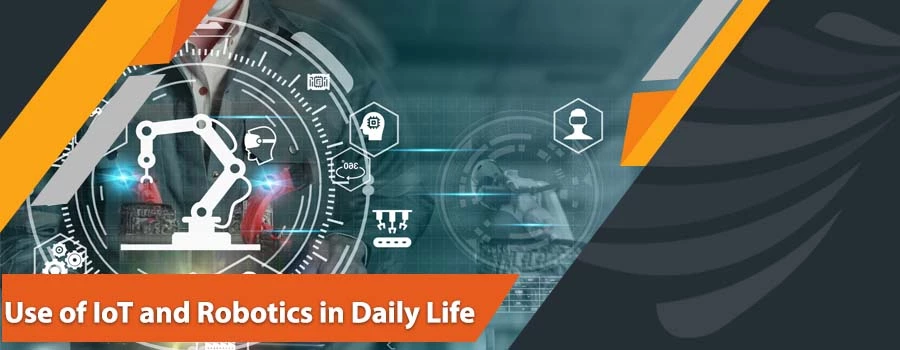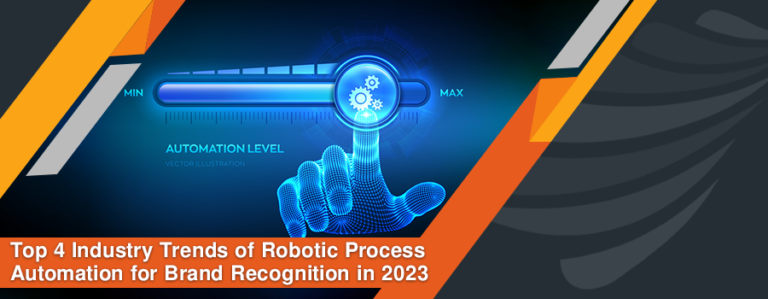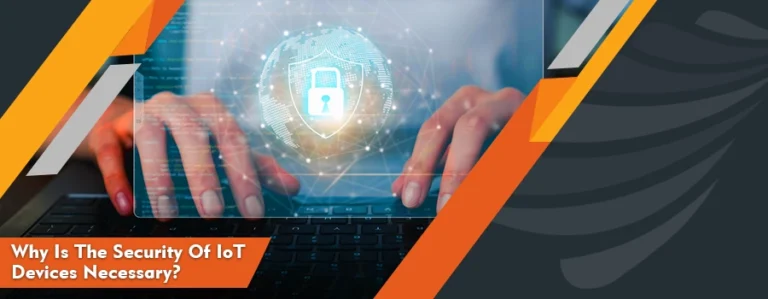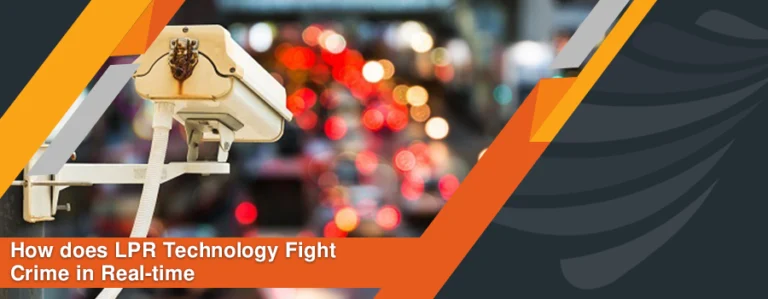Internet of Things (IoT) incorporates internet-connected devices or sensors that have the potential to collect millions and billions of Gigabytes of data in real-time. Without any human intervention, the data in IoT is transferred among the various devices over a wireless network. IoT devices are the most significant drivers of digital transformation, new applications, data-driven optimization, innovation and streaming revenue across various sectors. Usually, IoT devices are programmed to handle specific tasks, whereas, robots are designed to learn from the environment while reacting to unforeseen conditions. The technologies behind robotics are Artificial Intelligence (AI) and Machine Learning (ML).
IoT and robotics are perceived as separate fields, but these technologies are evolving together to ease human life. The integration of IoT and robotics has reduced human tasks’ complexities and has enabled humans to perform their daily life activities with ease. Hence, the merger of these technologies has created the Internet of Robotics Things (IoRT) to represent intelligent devices that can monitor events, gather data through sensors and determine the best action accordingly. Considering the importance of IoT and robotics in daily life, the real-life applications of these two technologies have been discussed in this article along with highlighting their current market and future scope.
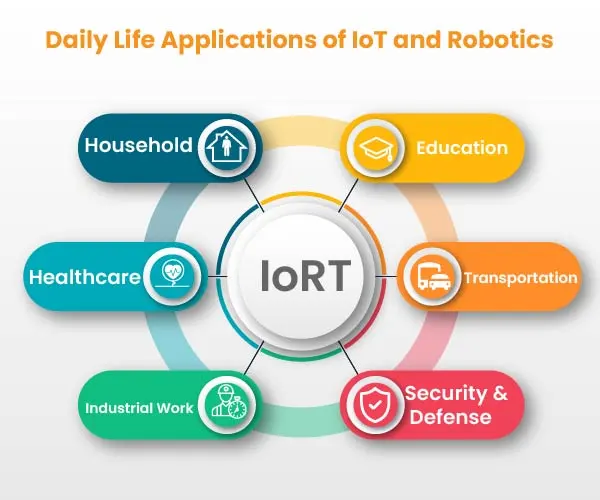
Daily Life Applications of IoT and Robotics
Household
The fusion of IoT and robotics has complemented home automation. IoT robots in homes have sensors to monitor the lighting and heating systems which are electronically controlled as per the surroundings. Nowadays, a regular household consists of a smart vacuum cleaner, automatic lawn-mower or cooking bots to ease human efforts and help them in completing the assigned task effortlessly. These robotic devices have sensors that transfer the data over the personal cloud and IoT network so that humans can make data-driven decisions to manage their households. Furthermore, the technologies of AI and ML help IoT robots in the home to improve operations by continuously learning from the environment. Hence, IoT robotics has made the management of the household extremely convenient
Industrial Work
Day-to-day industrial work has become easier and more convenient with the help of IoT and robotics. In industries, IoT robots have replaced humans to perform dangerous tasks. The recent statistic published by Statista indicates that in 2020, the sales volume of 384,000 units of industrial IoT robots has been observed globally and it is forecasted that the sales will be spiked by 518,000 units in 2024. Hence, it can be said that the use of the Internet of Robotic Things to perform day-to-day industrial applications is less likely to become obsolete in the future. IoT robots provide countless benefits to the industries such as assembling heavy parts, avoiding accidents, reducing human errors and increasing the speed of production.
Healthcare
The use of IoT Robotics has opened new opportunities in the healthcare industry. In a healthcare environment, IoT robotics incorporates a wide range of health monitoring sensors that can improve disinfecting protocols. This aspect of IoT and robotics has proven to be extremely helpful at the time of the Coronavirus pandemic. IoT robots have helped healthcare providers by offering contactless disinfection of contaminated objects and areas. Apart from this, IoRT in healthcare has offered patient monitoring by tracking the condition of the patient through embedded sensors. This enables healthcare professionals to take accurate and precise decisions about the patient. Another example of IoRT in healthcare is a massage robot that uses brain-based networks and data mining to conduct the desired massage technique and proper pressure to provide relief to the patient. The aforementioned cases represent the perfect use of IoT robotics in performing daily healthcare activities.
Education
Just like other activities, educational activities have improved as well with the help of IoT and robotics. The learning experience of the students is made more interactive while integrating IoRT solutions. The development of interactive display that combines natural writing technology, dry-erase, multitouch and cloud-based lesson delivery networks are some examples of IoT and robotics in education. IoT robots also facilitate the educational leaders with distant learning, automated attendance record, special education and close monitoring of students. In the time of the Covid-19 pandemic, the majority of the online education platforms provided support networks and connected learning experiences by using IoRT architecture for K-12 and higher education. A prominent example in this regard is Blackboard which used IoT robotics to retain educational flow at the time of pandemic.
Security and Defense
The uses and applications of IoRT in the security sector are of great importance. This is because IoT robotic devices gather data about the desired area, track the disturbance if any and immediately notify the owner. These kinds of robotic facilities are not only limited to the security of humans and their assets but also used for military purposes. For instance, monitoring the area, arming or disarming bombs, tracing the activities of enemies and simultaneously sending the real-time information to the soldiers to prepare them in advance. Therefore, IoT robots help people and properties from potential harm.
Transportation
Transportation systems in revolutionizing due to the Internet of Robotic Things. The most recent transportation system has gained widespread popularity is driverless cars. These cars are highly advanced and use the combination of IoT, robotics, AI and ML to maintain communication with other cars, measure distance, speed and select comfortable routes to reach the destination. Driverless cars also have the potential to predict traffic and prevent accidents. This application of IoRT has also given rise to a new opportunity for an autonomous supply chain that can reduce cost and human efforts easily. The research of McKinsey & Company on the future of mobility indicates that by 2030, nearly 45% of the cars will be replaced by autonomous vehicles which will enhance the revenue of the driverless car industry to $750 billion. Hence, it can be said that the advent of autonomous cars might not be possible without the concepts of IoRT, which is now facilitating humans with secure and effortless ways of transport.
Current and Future Market Prospects of Internet of Robotic Things (IoRT)
The above discussion has made it clear how the combination of IoT and robotics has improved the life of human beings by facilitating them in day-to-day tasks. The increased popularity and awareness about IoRT have positively impacted its growth and market. The market analysis and insight conducted by NCN to evaluate the IoRT market concluded that in 2020 the industry was growing with a CAGR of 24.1% and generating a revenue of about USD 8662.3 million. The research also forecasted that by 2027, the industry will be able to achieve a revenue of USD 40390 million. This reveals that the market of IoT in combination with robotics is gaining immense popularity and have a promising future as well. Hence, it is time for us to integrate IoRT in daily life as it provides potential benefits of completing the daily tasks easily and efficiently without any traces of human error.
Conclusion
With the consideration of the aforementioned use and benefits of IoT and robotics in daily life, it can be concluded that the combination of IoT and robotics has not only made our daily tasks easier but convenient to perform as well. This technology of IoRT is saving human efforts and energy along with reducing human ignorance and errors when the tasks are performed. The technology has innovated the industries of smart homes, healthcare, education, transport and security already, and penetrating new industries as well.

